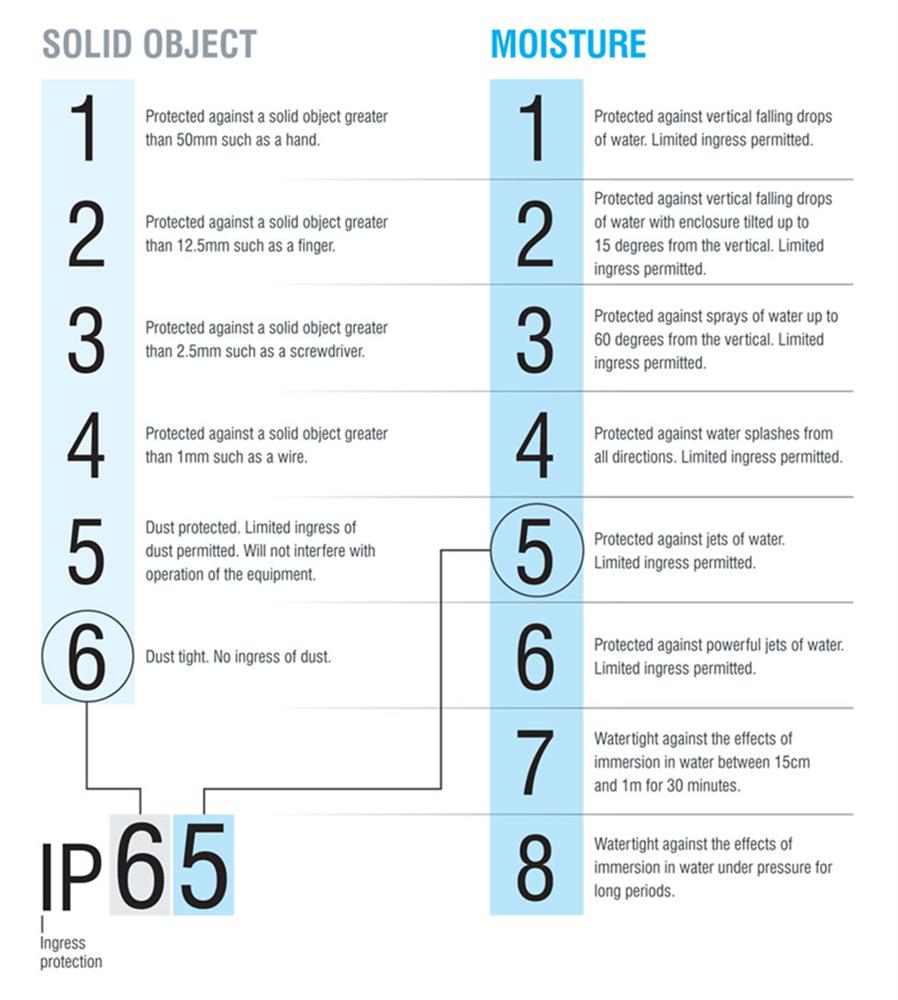The current development in technology has forced electronics to move out of offices and face environmental conditions in outdoor locations. Among all environmental factors, moisture is the cause of a vast majority of failures in electronics, and a major concern for electronics manufacturers. Water layers reduce resistance, slow circuit speeds, distort the waveforms, and may induce delays in the electronic circuit. The conductive layers of water may cause corrosion and result in the complete failure of electronics in some cases. Therefore, it becomes highly desirable to investigate methods to keep moisture away from electronics, rather than addressing the faults afterward.
This article throws light on the detrimental effects of moisture on electronics, and presents strategies to keep moisture away from electronics. Finally, some products from Techspray are highlighted which would aid manufacturers and end users prevent moisture from entering electronics.
Effects of Moisture in Electronics
The increased dependency of consumer products (industrial systems, defense systems, medical devices) on electronics has made electronics manufacturers job to ensure reliable products more challenging. One of the biggest threats to electronics reliability is the intrusion of moisture in these systems, a persistent threat common in a highly humid environment. The ingress of water into electronics has the following effects [1]:
- It increases the dielectric constant
- It initiates ionic corrosion
- It causes the growth of tin whiskers
Consequently, electronics enter the degradation process, which leads to intermittent faults followed by complete failure. Water may come directly in contact with electronics, or it might be diffused, or the vapors are condensed due to an increased level of relative humidity (RH). In any case, it will have detrimental effects. Some real world examples of water-induced electronics failure are:
- Fire in Samsung washing machines caused by corrosion instigated by moisture. Consequently, resistance and temperature increased ultimately resulting in fire [2].
- The crash of the U.S. Air Force’s B-2 Spirit bomber in Guam was due to the sensor, which received false readings because of the presence of moisture [2].
Waterproof vs Water resistant
|
Waterproof |
Water-resistant |
|
The waterproof material is impermeable i.e., no water can enter or leave the material. |
Water-resistant material is permeable. At high moisture levels, water-resistant material can be penetrated. |
|
It provides protection for a longer period. |
It will prevent water penetration to a certain level only. |
How to keep moisture out of electronics?
Coatings
Printed Circuit Boards (PCBs) and their components form the basic building blocks of all electronic devices. The fight against moisture in any electronic device starts by protecting PCBs and their components during the manufacturing process. The most adopted way of doing this is to use coating methods. The coating methods are further divided into:
- Potting
- Conformal coatings
In potting, the PCBA is completely embedded in a potting material, which can be epoxy resins or gels of silicone/urethane.
The other approach, commonly employed, is to apply a thin conformal coating on the PCB surface.
Although the materials used for both potting and conformal coating are the same, conformally coated PCBAs are lighter than their potted counterparts (Figure 1.). The conformal coating method has its advantages in terms of reduced space and weight (form factor) of the final electronic product i.e., smartphones.
The choice of conformal coating follows the IPC standard IPC-HDBK-830 for the appropriate material and application. The potting method has its advantages in terms of high protection against heat, vibration, and electrical arcs and is the most suitable method for rough conditions and high-voltage electrical devices. An important point to keep in mind is that conformal coatings are not waterproof; in fact, they are semi-permeable and allow a small amount of moisture to penetrate. However, conformal coatings are very good at preventing current leakage and corrosion caused due to humidity.

Figure 1: Potting vs conformal coating [2]
Greases
Grease is another weapon against moisture and is mostly used in connectors, switches, relays, and sliding parts.
Dielectric grease is known to improve insulation and prevent electrical connection by providing a barrier to moisture intrusion. It is hydrophobic in nature and isn’t washed away with water. Dielectric grease is most suited in high voltage applications as it increases the breakdown voltage between insulators in the presence of moisture.
Another type of grease is conductive grease, which prevents electrical connections from corrosion by keeping water away. Conductive greases are used in roller bearings as they prevent the build-up of static charge while providing protection against moisture. Conductive greases should never be used in high-voltage applications. Another type of grease is Silicone grease, which is waterproof and it is best suited for applications involving extreme environmental conditions. It can be used to protect high-voltage electrical components [3], and high-voltage power cables.
Gaskets and Silicone
Once the moisture prevention steps at the component level have been executed, the next barrier to moisture is an enclosure that prevents the ingress of water into electronics’ circuitry. A standard enclosure will not suffice if the electronic system is to be deployed in a harsh environment. This is because the moisture (due to humidity or rain) can find its way inside the enclosure through any of the tiny gaps or spacing. To prevent this, rubber gaskets are used to seal the enclosure lids while silicone is used to seal the glands made for the passage of wiring.
Rubber gaskets and silicone sealant is very common in the chemical industry where electronic instrumentation is vulnerable to damage from the release of chemicals or fumes. Particularly, flanges in Resistance Temperature Detectors (RTDs) are often equipped with gaskets and RTV silicone when the instrument is to be installed in the field.
Room Temperature Vulcanizing (RTV) silicone is sometimes used as a supplement sealer while repairing gaskets. RTV silicone is a very good barrier to moisture and lasts longer than silicone. Electronics assemblies now use specific enclosures to guarantee dry operating conditions.
A helpful tool to classify the risk and features of a component and its protective measures is the IP rating (Ingress Potential). The IP rating is an international standard (IEC 60529) that rates the degree of protection or sealing effectiveness in electrical enclosures. The Ingress Protection (IP) rating identifies the appropriate environment for a given electrical component. The first digit in the rating covers the susceptibility to solid objects (eg, wire or hand), while the second digit in the IP rating indicates the level of moisture protection that the enclosure can provide. This is shown in Figure 2. The gaskets help achieve the required protection against moisture and other contamination. Gaskets, RTV, and silicone make the enclosures waterproof in the true sense.

Figure 2: IP codes guide [3]
Techspray’s Line of Conformal Coatings
Techspray has been facilitating electronics manufacturers since 1968. By prioritizing effectiveness and safety and anticipating the ever-changing requirements, Techspray has become an industry leader in a short span of time. Techspray’s extended line of conformal coatings protects the PCBAs from dirt, moisture, vibration, and thermal shocks, and provides excellent dielectric strength.
The Fine-L-Kote SRV Silicone Conformal Coating provides excellent protection in a very broad temperature range. It finds its ideal application in high-humidity environments. The product is RoHS compliant and meets the IPC-CC-830B standard. Numerous factors have to be considered while selecting a conformal coating for a particular application e.g., dielectric strength, operating temperature range, cure time, and viscosity. The Conformal Coating Selection Guide by Techspray facilitates the PCB design engineers to select the product that best fits their requirements.
References
|
[1] |
M. P. Bhanu Sood, "Controlling Moisture in Printed Circuit Boards," IPC Printed Circuit Expo, APEX & Designer Summit Proceedings, 2011. |
|
[2] |
A. F. S. K. R. A. H. C.-G. M. H. A. M. G. P. İlknur Baylakoğlu, "The detrimental effects of water on electronic devices," e-Prime - Advances in Electrical Engineering, Electronics and, 2021. |
|
[3] |
TAMESON, "Silicon grease and oil," TAMESON, [Online]. Available: https://tameson.com/silicone-grease-oil.html. [Accessed 2 10 2022]. |
|
[4] |
atlasRFIDstore, "atlasRFIDstore," [Online]. Available: https://www.atlasrfidstore.com/rfid-insider/rfid-ip-ratings/. [Accessed 28 09 2022]. |






